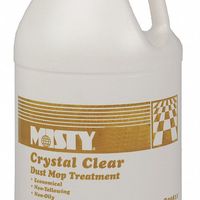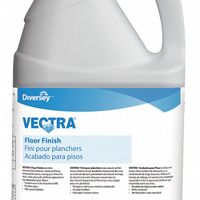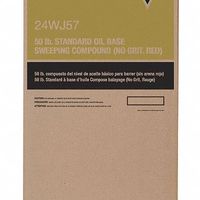Call +(254) 703 030 000 / 751 483 999 / 721 704 777
- Home
- Cleaning And Janitorial
- Cleaning Chemicals
- Floor Care Chemicals
.....Read More
Frequently Asked Questions
What are the best practices for regular floor maintenance?
1. **Regular Cleaning**: Sweep or vacuum floors daily to remove dust and debris. Use a microfiber mop for dusting to prevent scratches.
2. **Appropriate Cleaning Solutions**: Use cleaning products suitable for your floor type. Avoid harsh chemicals that can damage the finish. For hardwood, use pH-neutral cleaners; for tiles, a mild detergent works well.
3. **Spill Management**: Clean spills immediately to prevent stains and water damage. Use a damp cloth for hardwood and a mop for tiles or vinyl.
4. **Protective Measures**: Use mats at entrances to reduce dirt and moisture. Place felt pads under furniture legs to prevent scratches.
5. **Regular Polishing and Buffing**: For hardwood, polish every few months to maintain shine. Buffing can help remove minor scratches and restore luster.
6. **Deep Cleaning**: Schedule periodic deep cleaning. For carpets, consider professional steam cleaning. For tiles, scrub grout lines to prevent discoloration.
7. **Humidity Control**: Maintain indoor humidity levels between 30-50% to prevent wood floors from warping or cracking.
8. **Avoid Excess Water**: Use a damp mop rather than a wet one, especially on wood floors, to prevent water damage.
9. **Routine Inspections**: Regularly check for signs of wear or damage. Address issues like loose tiles or warped wood promptly.
10. **Refinishing**: For hardwood, consider refinishing every 3-5 years to restore the surface and protect the wood.
11. **Proper Footwear**: Encourage the use of soft-soled shoes indoors to minimize wear and tear.
12. **Sunlight Protection**: Use curtains or blinds to protect floors from UV damage, which can cause fading.
13. **Regular Maintenance Schedule**: Establish a consistent maintenance routine tailored to the specific needs of your flooring type.
How often should floors be cleaned and maintained?
The frequency of floor cleaning and maintenance depends on several factors, including the type of flooring, the amount of foot traffic, and the specific environment. Here’s a general guideline:
1. **Residential Floors:**
- **Hardwood:** Sweep or vacuum daily to remove dust and debris. Damp mop weekly with a cleaner suitable for wood floors. Refinish every 3-5 years.
- **Carpet:** Vacuum 1-2 times a week. Deep clean every 12-18 months.
- **Tile:** Sweep or vacuum daily. Mop weekly with a mild detergent. Seal grout annually.
- **Laminate:** Sweep or vacuum daily. Damp mop weekly with a laminate floor cleaner.
2. **Commercial Floors:**
- **High-Traffic Areas (e.g., lobbies, hallways):** Sweep or vacuum daily. Mop or scrub with a machine daily. Deep clean weekly.
- **Moderate-Traffic Areas (e.g., offices):** Sweep or vacuum daily. Mop or scrub 2-3 times a week. Deep clean monthly.
- **Low-Traffic Areas (e.g., storage rooms):** Sweep or vacuum weekly. Mop or scrub bi-weekly. Deep clean quarterly.
3. **Special Environments:**
- **Healthcare Facilities:** Clean and disinfect daily. High-touch areas may require multiple cleanings per day.
- **Restaurants:** Sweep and mop daily. Deep clean weekly to remove grease and food residue.
4. **Seasonal Maintenance:**
- **Spring/Fall:** Conduct a thorough inspection and address any repairs or refinishing needs.
- **Winter:** Increase cleaning frequency to manage salt and moisture from snow.
Regular maintenance not only ensures cleanliness but also prolongs the life of the flooring. Always follow manufacturer recommendations for specific cleaning products and techniques to avoid damage.
What types of cleaning chemicals are safe for different flooring materials?
For hardwood floors, use pH-neutral cleaners specifically designed for wood. Avoid water-based solutions and harsh chemicals like ammonia or bleach, which can damage the finish.
Laminate floors require gentle cleaners. Use a mild detergent mixed with water or a laminate-specific cleaner. Avoid excessive water and abrasive cleaners that can cause swelling or scratches.
For tile floors, a mixture of warm water and a small amount of dish soap is effective. For tougher stains, a vinegar and water solution can be used, but avoid vinegar on natural stone tiles as it can etch the surface.
Vinyl floors are best cleaned with a solution of water and a few drops of dish soap. Avoid abrasive scrubbers and high-pH cleaners that can damage the surface.
Natural stone floors, like marble or granite, require pH-neutral cleaners. Avoid acidic or alkaline substances like vinegar or ammonia, which can etch the stone. Use a stone-specific cleaner for best results.
Carpeted floors can be cleaned with carpet shampoos or steam cleaners. Ensure the cleaner is suitable for the carpet material to avoid discoloration or damage.
For concrete floors, a mild detergent mixed with water is generally safe. Avoid acidic cleaners that can degrade the concrete surface.
Linoleum floors should be cleaned with a pH-neutral cleaner or a mixture of water and mild dish soap. Avoid excessive water and harsh chemicals that can damage the material.
Always test a small, inconspicuous area before applying any cleaner to ensure it does not damage the flooring.
How do floor finishes and sealers protect flooring?
Floor finishes and sealers protect flooring by providing a protective layer that enhances durability, appearance, and maintenance. They act as a barrier against physical damage, such as scratches, scuffs, and abrasions, which can occur from foot traffic, furniture movement, and other activities. This protective layer helps to extend the lifespan of the flooring by reducing wear and tear.
Sealers penetrate the surface of porous flooring materials, such as concrete, stone, or wood, to fill in pores and create a smooth, non-porous surface. This prevents the absorption of liquids, which can cause staining, water damage, or mold growth. By repelling moisture, sealers also help to maintain the structural integrity of the flooring.
Floor finishes, often used on top of sealers, provide an additional layer of protection and enhance the aesthetic appeal of the flooring. They can add shine, improve color, and create a uniform appearance. Finishes can also offer slip resistance, making floors safer to walk on.
Both finishes and sealers simplify cleaning and maintenance by preventing dirt, dust, and grime from penetrating the flooring material. This makes it easier to clean surfaces with regular sweeping and mopping, reducing the need for harsh cleaning chemicals.
Overall, floor finishes and sealers are essential for preserving the quality and appearance of flooring, ensuring it remains functional and visually appealing for an extended period.
What is the process for stripping and refinishing floors?
1. **Preparation**: Clear the area of furniture and debris. Ensure proper ventilation and use protective gear like gloves and masks.
2. **Sweep and Dust**: Thoroughly sweep and dust the floor to remove loose dirt and particles.
3. **Apply Stripper**: Choose an appropriate floor stripper based on the floor type. Apply it evenly using a mop or sprayer, ensuring the floor is saturated but not flooded.
4. **Dwell Time**: Allow the stripper to sit for the recommended time, usually 5-15 minutes, to break down the old finish.
5. **Scrubbing**: Use a floor machine with a stripping pad to scrub the floor, focusing on high-traffic areas. For edges and corners, use a hand-held scrubber or brush.
6. **Remove Slurry**: Use a wet vacuum to remove the slurry of old finish and stripper. Ensure all residue is removed to prevent re-depositing.
7. **Rinse**: Rinse the floor thoroughly with clean water to remove any remaining stripper. Repeat if necessary until the floor is clean.
8. **Neutralize**: Apply a neutralizing solution to balance the pH of the floor, especially if using a high-alkaline stripper. Rinse again with clean water.
9. **Dry**: Allow the floor to dry completely. Use fans or dehumidifiers to speed up the process if needed.
10. **Inspect**: Check for any remaining finish or residue. Re-strip areas if necessary.
11. **Apply Finish**: Choose a suitable floor finish. Apply the first coat evenly using a clean mop or applicator. Allow it to dry completely.
12. **Additional Coats**: Apply additional coats as needed, typically 2-4, allowing each to dry thoroughly before applying the next.
13. **Cure**: Allow the final coat to cure for the recommended time before replacing furniture or allowing foot traffic.
How can sweeping compounds and dust mop treatments improve floor maintenance?
Sweeping compounds and dust mop treatments are essential tools in floor maintenance, offering several benefits that enhance cleanliness and prolong the life of flooring surfaces.
Sweeping compounds are typically made from a mixture of sawdust or other absorbent materials and oil-based or water-based binders. When spread over a floor, they attract and hold dust, dirt, and debris, preventing these particles from becoming airborne during sweeping. This not only results in a cleaner floor but also improves indoor air quality by reducing the amount of dust circulating in the environment. The compounds also help in minimizing scratches and abrasions on the floor surface by encapsulating gritty particles, which can otherwise cause damage when dragged across the floor.
Dust mop treatments, on the other hand, are applied to dust mops to enhance their ability to capture and retain dust and fine particles. These treatments often contain oils or other sticky substances that increase the dust mop's effectiveness. By using treated dust mops, maintenance staff can efficiently remove dust and dirt without scattering them, ensuring a thorough cleaning. This process is particularly beneficial for maintaining the appearance and condition of hard surface floors, such as wood, tile, or laminate, as it prevents the accumulation of dirt that can lead to dullness and wear over time.
Together, sweeping compounds and dust mop treatments contribute to a more efficient and effective floor maintenance routine. They reduce the frequency of more intensive cleaning methods, such as wet mopping or scrubbing, thereby saving time and resources. Additionally, by maintaining cleaner floors, these methods help preserve the aesthetic appeal and structural integrity of flooring, ultimately extending its lifespan and reducing the need for costly repairs or replacements.
What are the benefits of maintaining floors in residential, commercial, and industrial settings?
Maintaining floors in residential, commercial, and industrial settings offers numerous benefits, enhancing both functionality and aesthetics.
In residential settings, regular floor maintenance ensures a clean and healthy living environment. It prevents the accumulation of dust, allergens, and bacteria, contributing to better indoor air quality and reducing health risks. Well-maintained floors also enhance the aesthetic appeal of a home, potentially increasing its market value. Regular care can extend the lifespan of flooring materials, saving homeowners from costly replacements.
In commercial settings, floor maintenance is crucial for safety and customer perception. Clean and well-maintained floors reduce the risk of slips and falls, protecting both employees and customers. This is particularly important in high-traffic areas where wear and tear are more pronounced. A well-kept floor reflects positively on a business, enhancing its image and customer experience. It also ensures compliance with health and safety regulations, avoiding potential legal issues.
In industrial settings, floor maintenance is vital for operational efficiency and safety. Industrial floors often endure heavy machinery, chemical spills, and high foot traffic, making them susceptible to damage. Regular maintenance prevents deterioration, ensuring a safe working environment and minimizing the risk of accidents. It also helps in maintaining the structural integrity of the facility, preventing costly repairs and downtime. Clean floors in industrial settings can also improve morale and productivity, as they contribute to a more organized and professional work environment.
Overall, maintaining floors across these settings is essential for safety, aesthetics, cost-effectiveness, and compliance, ultimately contributing to a better quality of life and business operations.




